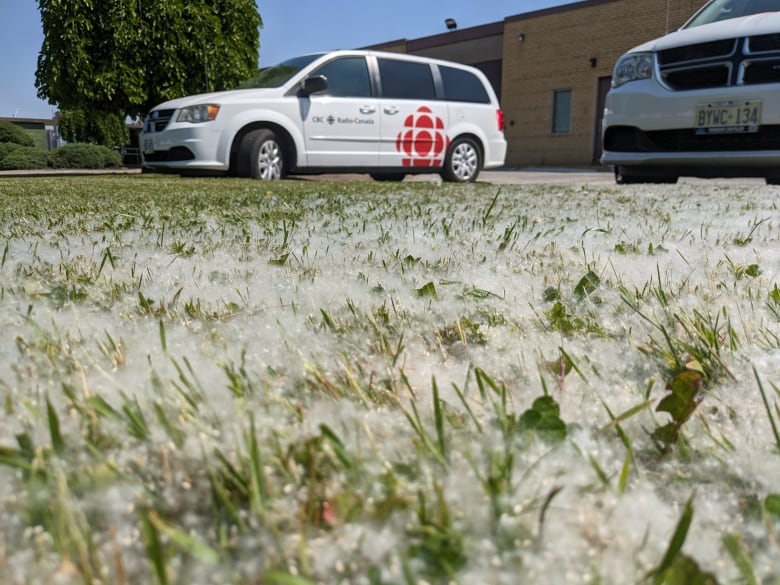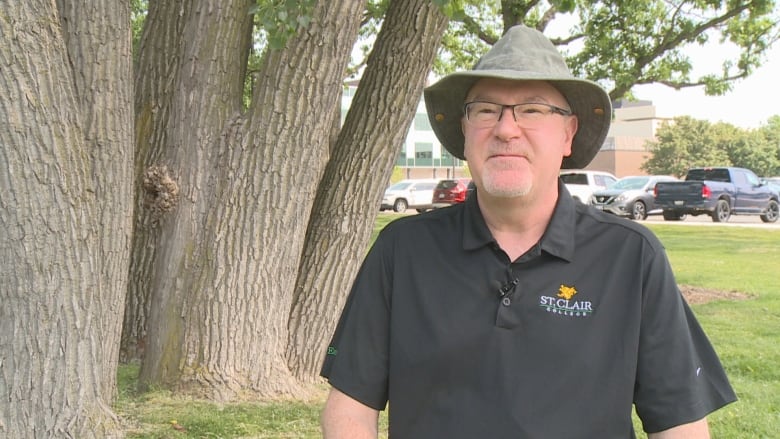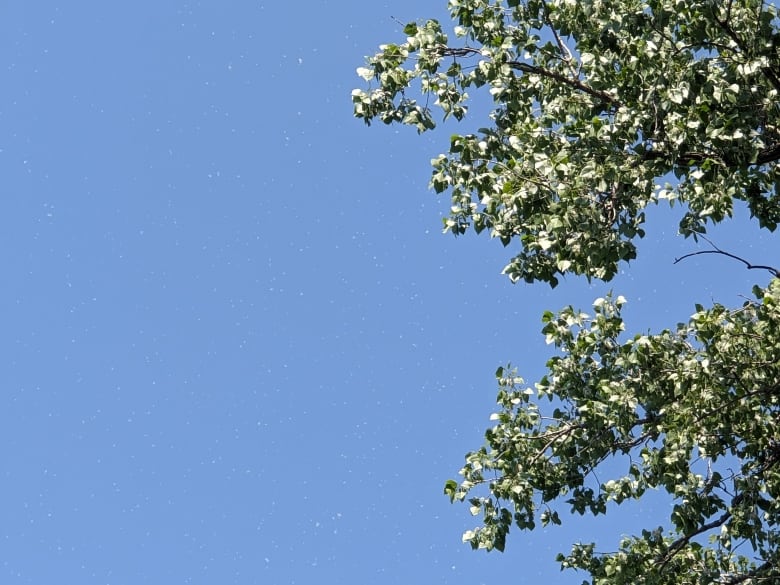If you’re walking around Windsor lately and wondering, “what the fluff is this stuff?,” you’re not alone.
Poplar cotton — the white, nearly snow-like substance coming off the trees and collecting in grass and potholes — seems to be particularly abundant this year and is a sure sign allergy season is here, experts said.
The fluff is a collection of seed hairs coming from trees in the family of trees that includes poplars, aspens and willows, said Sandy MacDonald, a professor of landscape horticulture at St. Clair College.

“This is a way for the tree to distribute seeds,” MacDonald said “Inside that fuzz there is a small tiny seed and of course that’s for distribution. That seed can then float to another location, sometimes even kilometres away.
“Once it’s moist … it can germinate. And of course this is a way for the plant to reproduce.”
Poplar trees — drawing their name from the Latin root “populus” — are, as their name suggests, quite popular across Canada. They’re often planted in urban areas because they’re fairly tolerant, MacDonald said: able to withstand the pollution, compacted soil, partial flooding and excess salt often found in cities.
Other common trees in the same family, like willows and aspens, also produce the fluff — meaning Canadians from coast to coast will notice the stuff, he said.
Lots of people this time of year are suffering from seasonal allergies and may point the finger at the fluff. MacDonald said the fluff itself actually isn’t an allergen — but that’s not the end of the story.
Windsor Morning8:29What the fluff?
Sandy MacDonald, who teaches a landscape horticulture program at St. Clair College, speaks with CBC Windsor Morning host Nav Nanwa about poplar seed “fluff”.
“In some ways it can be irritating to the eyes, nose and throat if you draw it in …that could indicate irritation, so could be mistaken for an allergy symptom,” MacDonald said.
“But also there is some evidence too that other pollen in the air, coming from other trees that are pollinating, it can actually catch … it acts like a carrier as well.

“But technically we don’t think that most people are actually allergic to that fuzz itself.”
More people seeing local pharmacist for seasonal allergies
Rob Modestino is the owner of Rob’s Whole Health Pharmacy in LaSalle. Seeing the fluff, he said, is a surefire way to know allergy season is upon us.
“There’s more people coming in this year than we’ve seen before, that are coming in saying they’ve ‘never had allergies before. Are we sure it’s allergies? Are we sure?’

“Most come in thinking it’s a cold, some type of flu bug or bacterial infections. And then when you dig into it deeper and get some information, you do find out that it is allergies. Just seems the last couple of years have gotten a lot worse.”
Modestino said people should work to reduce their exposure to pollen by closing windows and take allergy medication if necessary. Symptoms to look out for include runny nose, itching eyes and sneezing.
People should speak with their pharmacist before taking allergy medications, Modestino recommended. This year, pharmacists are also able to assess for and prescribe allergy medications that could be more effective than the over-the-counter medications for people with more severe seasonal allergies.
More fluff than usual this year
There could be more fluff than usual, likely caused by the weather: Hot and dry weather over the last few weeks, lack of a late frost, and the last two hot, dry summers causing stress for the trees, and consequently the need for trees to distribute more seed, could all be playing a factor, MacDonald said.

The fluff is combustible, MacDonald said, so some people use it as a fire starter.
But people have also explored other uses: Using it to stuff pillows and as a fibre. Neither works well. Turns out, what it does best is what it’s meant to do.
“Even though they’re very fine … there’s a central hollow core and that actually helps hold water for the germinating seeds,” he said.
“The structure of them is really quite interesting, and of course works perfectly for the germinating seed.”













Leave a comment